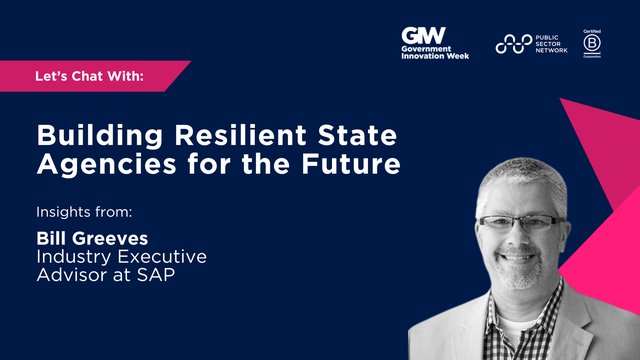
The pandemic as a catalyst for change
It is very likely that almost every industry across the globe was affected in some ways by the pandemic, and in many cases, practices and procedures changed as a result, either temporarily or permanently. The healthcare sector however undoubtedly experienced more chaos, more changes and more permanent modifications than any other field. In particular, after hospitals stopped being overwhelmed by the number of patients and types of symptoms that COVID-19 presented, many began to examine the way they treated patients to see if some of those processes could be improved using technology or other digital modalities.
Dr David Rauchwerger, the Chief and Medical Director of the Emergency Medicine Program and Sexual Assault and Domestic Violence Program at Mackenzie Health in Ontario, who describes himself as a regular emergency doctor, says that in their hospital, they began to look at the patient journey to see how healthcare technology could be incorporated into that. Healthcare technology is not a new concept and some of it was clearly being considered and incorporated before the pandemic, but from a clinical perspective, the pandemic was a major catalyst.
The pandemic has been a huge driver in taking things even further along that digital journey, and has inspired or influenced both the technology folk and the clinical folk to start coming together. - Dr David Rauchwerger, Chief and Medical Director of the Emergency Medicine Program and Sexual Assault and Domestic Violence Program, Mackenzie Health (Ontario)
Using technology to make a positive difference
Traditionally, most people in most industries have been working in their own silos. This has included doctors. In private practice they rarely shared information between their fellow clinicians, and even in hospitals, there was not always a lot of joint communication. Technology has changed much of that. We now have the technology that can connect patients, physicians, clinicians, administrators, industry, and just about everybody. However, it is increasingly important to remember that simply having access to technology is not enough. Some people are early adopters and others will never quite get it. So although we have lots of great technologies, and we like to involve patients in their development, we have to make sure we’re involving everybody. This is particularly relevant to those who have a low socioeconomic status, those who don’t necessarily have easy access to technology, or those who are elderly. Technology should be about including people and making sure we don’t leave anyone behind.
Right throughout the hospital, technology is used in every department and across almost every element. From making appointments to entering demographic or primary care data, from registering nurses to accessing the electronic medical record, and from entering orders including imaging to discussing results with patients. Given the proliferation and efficiency of the technology, some patients actually have the results of their tests in their hands before they discuss the results with me. Some doctors in the hospital don’t like that, but I think we’re empowering the patients.
The biggest issue is not the technology itself, but how and when it is used. In some cases, tech is used to prevent medical errors since it can process multiple things efficiently and simultaneously. But the key is to remember that humans use it and that it is for humans. It is unlikely therefore that AI or other self-thinking tech will ever take over entirely, but at the same time, it is already being used for predictive things. For instance, how many physicians need to be on duty during peak periods, or how many CAT scans or ultrasound X rays will need to be performed in the next few hours given the current volume of patients. In this way, AI is making an enormous contribution and will only get better. But like everything, it is not yet embraced by all.
The introduction of the new electronic medical record system at Mackenzie called EPIC, was one that initially had some pushback. Some doctors argued that they will never need to see their patients again with such a system. Of course this was not the case. The system encompasses everything from a physician perspective, which is very beneficial, but when it was first introduced, unsurprisingly there were some growing pains. Changing from paper to an electronic system was not intuitive for everyone. Eventually though it started to have an impact for both physicians and patients, who also have access to a portal and thus can access their results, in real-time for most results. So now, not only does the EMRS provide better metrics, we also have a more efficient medical department, and information can be shared across departments and even across hospitals. It’s a vast repository of data.
Ensuring everyone speaks the same language
Simply introducing a system like EPIC though, with no preparation or training would not have worked. Once the system was selected, our senior physicians and other senior leaders worked with the developers, analysts and IT experts for some deep training. Together they created the customer interface, and from a clinician perspective, it’s so important to have those people across disciplines all speaking the same language, with the same clinical understanding. This not only removes silos but ensures collaboration and cooperation. This led to the system being introduced a little later than expected, but sometimes the timing of the introduction of a system is as important as the system itself.
This collaborative aspect has helped in other areas too. Virtual care for instance used to be the domain of specific clinicians. COVID-19 meant that it became used across the hospital, and the EMRS means that it still can be used across most disciplines. In a clinical environment, some things just can’t be done virtually, but even when a face-to-face visit is required, virtual visits can be used to facilitate that and to get an initial understanding of the situation. When everyone is on the same page, then this works well and will only continue to evolve. The same is true for virtual meetings and conferences. During the pandemic, there were many meetings on Teams and Zoom. They served a purpose and will continue to do so, but there is nothing like an in-person meeting or conference. At the same time, convenience is important and for doctors that cannot be overstated, as long as everyone has the same understanding and reasons for being there.
Speaking the same clinical language was also very useful during the pandemic, and especially at Mackenzie Health. For a decade, a new hospital in the city of Vaughan was in the planning – the first new hospital in Ontario for over 30 years. It was designed as an acute care facility, and opened in June 2021. But it was designed with the new EPIC EMRS built-in, and before it officially opened, during the height of COVID-19, it served as a pandemic relief facility, which only came about because of the new collaborative and cooperative approach that Mackenzie Health, which has been taken into every aspect of healthcare largely since the start of the pandemic.
Featured speaker:
- Dr David Rauchwerger, Chief and Medical Director of the Emergency Medicine Program and Sexual Assault and Domestic Violence Program, Mackenzie Health (Ontario)

































